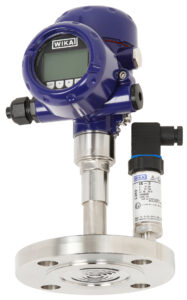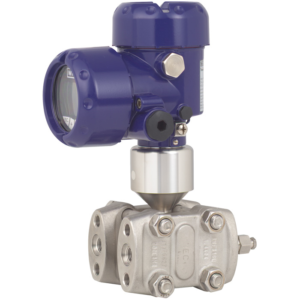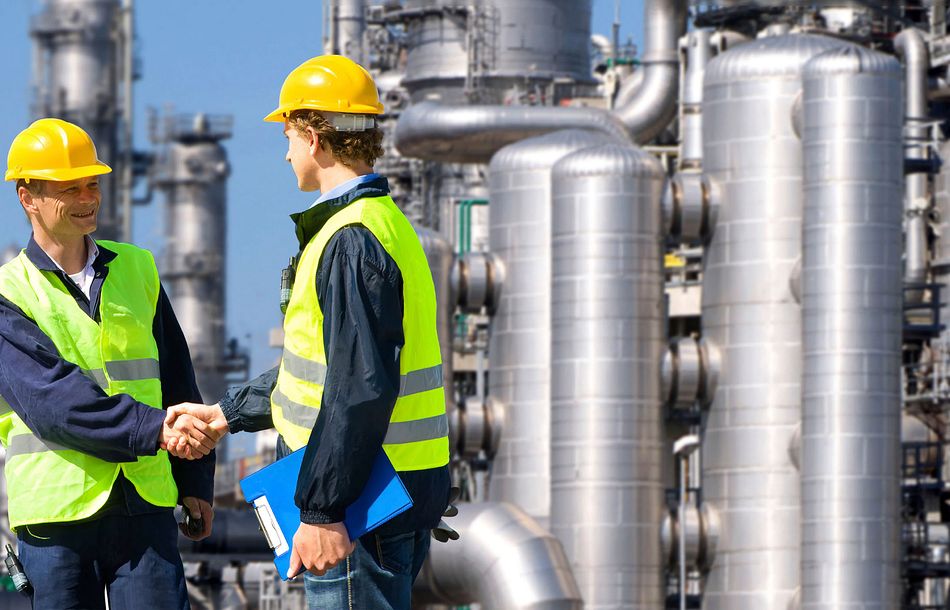Chlorine is an extremely reactive and versatile chemical; it is also rather hazardous to produce. To rule out any harm to people and the environment, the individual process steps must be monitored reliably and precisely. Take pressure measurements, for example: in view of chlorine’s aggressive properties of, diaphragm seal systems – in other words, the diaphragm itself and the measuring instrument which is welded to it – have proven to be a suitable solution.
The practical benefits of chlorine were identified not long after its discovery more than 200 years ago. Owing to its harmful effects both on the environment and on human health, other substances such as ozone or hydrogen peroxide are increasingly being substituted for chlorine in areas like drinking water treatment and paper bleaching. In the chemical industry, on the other hand, there is still no alternative – first and foremost as a raw material for PVCM furthermore, it also plays an important role in pharmaceutical manufacturing.
Owing to chlorine’s reactive properties – it can react explosively with organic substances such as lubricating grease or filling liquids, for instance – the production process must comply with strict safety requirements. All measuring instruments used in the individual steps must be designed accordingly. The instrumentation for pressure monitoring covers a wide range from highly accurate process transmitters with a self-diagnostic function to pressure gauges for on-site display needing no external power, often working redundantly as a back-up.
The design of measuring instruments in compliance with chlorine requirements is described in various standards and directives. In Europe, the GEST recommendations published by EuroChlor, the umbrella organisation of European chlorine producers, serves the industry as a benchmark. This guide advocates the use of diaphragm seals to connect pressure measuring instruments to the process, ideally mounted directly to the measurement technology.
Diaphragm seals transmit the process pressure hydraulically via a flush diaphragm and separate the measuring instrument which is welded to it safely from the process. The transmission fluid must be inert, in other words non-reactive with the majority of substances, for example halocarbon oil. All wetted parts of the diaphragm seal should be made from chlorine-resistant materials depending on the intended application (wet or dry chlorine gas).

The diaphragm materials are application-specific, e.g. tantalum, Hastelloy C276, C4 alloy or titanium as well as plastics like ECTFE, PTFE or PVDF. Tantalum is the only metal that can be used without restriction for both wet and dry chlorine (at temperatures up to +150°C). However, its limited strength and the attendant risk of cracking have to be taken into account. Hastelloy C276 and C4 alloy are a good choice for dry chlorine, mainly due to their excellent mechanical properties up to a maximum temperature of 300°C. Titanium is only suitable for wet chlorine applications because it presents a metal fire hazard. The above-mentioned plastics are relatively flexible by comparison with metal. ECTFE has the lowest permeation rate, although use under pressure above +100°C is not recommended.
Chlorine is obtained by means of a chlor-alkali electrolysis process from sodium chloride (salt) and water. Two co-products are likewise produced during this process in addition to chlorine, namely hydrogen and caustic soda, which amongst other things are used to synthesise certain chemicals as well as for secondary products. However, electrolysis only works if the anode is separate from the cathode. If not, chlorine and hydrogen will form an explosive mixture. The energy-saving membrane electrolysis process has emerged as the preferred method in industry. A special, wafer-thin diaphragm which only allows positive sodium ions to diffuse is attached between the anode and the cathode.
Complex requirements are specified with regard to pressure measurements during electrolysis. It is not enough simply to install pressure transmitters at the system’s two compartments. The differential pressure which is determined between these compartments is decisive. Uniform pressure must be maintained in order to ensure problem-free electrolysis and prevent damage to the membrane. Since the material is very thin, any changes in the pressure difference must be detected straight away, so that the process can be stopped instantly in the event of a fault. Highly precise differential pressure transmitters with two diaphragm seals are used for this purpose, for example the transmitters in WIKA’s DPT series, which achieve accuracy of up to 0.075% of the span. On account of the critical environment, the instrument should have intrinsically safe electronics, even if a version with a flameproof enclosure is used. The design of the diaphragm seals for the differential pressure transmitter varies according to the measuring task: chlorine measuring points must have a tantalum diaphragm whereas hydrogen measuring points require a diaphragm with gold plating.
Following electrolysis, the chlorine gas undergoes a further process of filtration, purification and liquefaction under pressure at low temperatures. Chlorine’s hazard potential is significant at all stages of the production process right up until filling. The parallel processes for the two co-products – hydrogen and caustic soda – likewise demand close attention because they are just as reactive as the chlorine itself.
As mentioned earlier, diaphragm seals are manufactured in accordance with the process conditions. Damage, for instance due to unexpected overpressure or corrosion of adhering particles can never be completely ruled out. Unwanted deformation can seriously distort the measurement result. Moreover, if the diaphragm is ruptured, transmission fluid will get into the process and impair the quality of the chlorine. Chlorine can also escape via the measuring instrument into the environment in this way.

This kind of damage at particularly critical points in the process can be prevented by using a diaphragm seal system with built-in diaphragm monitoring. This WIKA system – specifically the DMS27 for chlorine applications – features a double-diaphragm seal with two diaphragms on top of each other. The air between them is evacuated and the resulting vacuum monitored by a sensor. If the diaphragm on the process side is damaged, the second diaphragm takes over. The vacuum loss is simultaneously recorded and an electronic alarm signal output if the critical value is reached. The process pressure continues to be monitored reliably until a replacement is installed.
Chlorine production puts a permanent stress on the measurement technology in the process. Even the most durable diaphragm seal will show signs of wear sooner or later under such extreme conditions. If the measurement quality is impaired to an unacceptable degree, replacing the entire system is the only option. This frequently entails disposing of the dismounted unit comprised of the diaphragm seal and the measuring instrument. That may well be an economically viable solution in the case of pressure gauges. However, where high-quality process or pressure transmitters are involved, the situation is rather different.
Manufacturers like WIKA offer a special technical service here, where only the diaphragm seal is replaced or refurbished. The existing measuring system is opened, the new seal (including new transmission fluid) welded to the old instrument and the complete system calibrated. The full service life of the transmitter can consequently be exploited, not only bringing down the total cost of ownership of the diaphragm seal system in the long term but also shortening the lead time for replacement.
Conclusion: The measurement technology which is used in the production of chlorine must work reliably in safety-critical conditions. No unwanted reactions must be allowed to take place in the process and the instrumentation must also be capable of resisting the product’s aggressive properties. Diaphragm seal systems, generally in combination with process transmitters and using application-specific materials for all wetted parts, are the perfect solution for pressure monitoring. A version with built-in diaphragm monitoring is recommended for particularly critical points in the process.
opening photo: istockphoto.com
Source: WIKI






